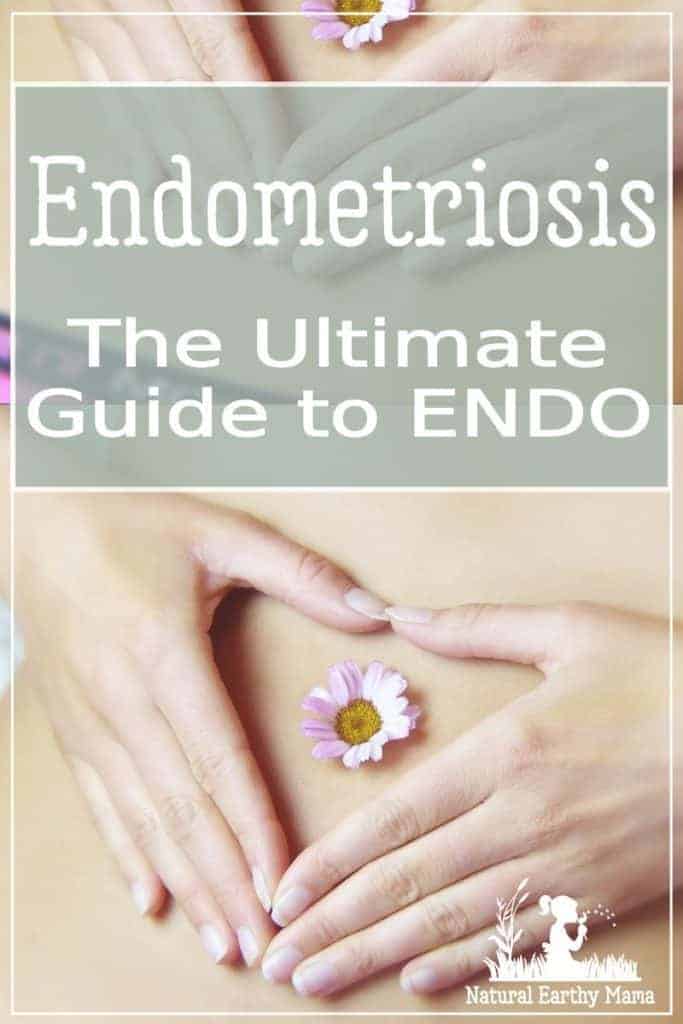 Are you struggling with endometriosis and need some answers?
Are you struggling with endometriosis and need some answers?
You are not alone. Here is the ultimate guide to endometriosis, it covers everything you need to know about symptoms, surgery, medical treatment and natural solutions, as well as how endometriosis affects your fertility and future pregnancies.
ULTIMATE GUIDE TO ENDOMETRIOSIS MENU
What is endometriosis?
What causes endometriosis?
What are endometriosis symptoms?
Endometriosis treatment options
What should you avoid if you have endometriosis?
Can you get pregnant if you have endometriosis?
Please read: This information is provided for educational purposes only and is not intended to treat, diagnose or prevent any disease. We encourage you to make your own health care decisions in partnership with a qualified health care professional.
This post contains affiliate links, this means at no extra cost to you, we make a commission from sales. Please read
our Disclosure Statement
What is Endometriosis?
Endometriosis is a condition where the layer of tissue that normally covers the inside of the uterus grows outside of it. The tissue can form nodules or plaques which may be seen during surgery.
Endometriosis is commonly found in the pelvic region on the thin pelvic lining called the peritoneum. It may be also be found on the pelvic ligaments, fallopian tubes, ovaries and bowel. However, in rare cases it may also occur in other parts of the body, like the lungs, spine and chest cavity.
Endometriosis is a common inflammatory disease estimated to affect 176 million girls and women worldwide in their reproductive years. This means that roughly 1 in 10 women in the western world will have endometriosis.
In most cases, there can be symptoms including period pain, pelvic pain and sub-fertility or infertility. In other cases, there may be no obvious symptoms and the diagnosis is made during the course of medical procedures for other reasons.
Endometriosis Stages
Stage I endometriosis (Minimal):
Typically small patches, surface lesions or inflammation on or around organs in the pelvic cavity.
Stage II endometriosis (Mild):
More extensive than stage I but infiltration of pelvic organs still very limited, without a great deal of scarring or adhesions.
Stage III endometriosis (Moderate):
Sometimes more widespread and starting to infiltrate (get into) pelvic organs, peritoneum (pelvic side walls) or other structures. Sometimes there is also scarring / adhesions.
Stage IV endometriosis (Severe):
Infiltrative and affecting many pelvic organs and ovaries, often with distortion of the anatomy and adhesions. Ie it gets everywhere and all up in ya grill.

What causes endometriosis?
Currently we don’t know. There is now good research to say there is a strong genetic component, and there is evidence that external factors seem to influence the genes and how bad the endometriosis is (1).
Basically if your mother or aunt has it, the chances of you having it is higher too.
It’s believed that 40 percent to 60 percent of women who have very painful periods also have endometriosis, and 20 percent to 30 percent of women who are unable to get pregnant are believed to have this disease. (2)
Endometriosis symptoms: What does it feel like to have endometriosis?
The most common symptom of endometriosis is pelvic pain. This is more than the usual “period cramps”. If you are finding yourself disabled once a month in agony, this is not normal and you should see a doctor.
Endometriosis symptoms include:
- Pain with periods (dysmenorrhoea). Often the most common symptom.
- Bowel problems like bloating, diarrhoea, constipation, pain with bowel movements, painful wind (sometimes diagnosed as Irritable Bowel Syndrome)
- Painful intercourse (dyspareunia)
- Sub-fertility or infertility
- Tiredness and low energy
- Pain in other places such as the lower back
- Pain at other times e.g. with ovulation or intermittently throughout the month
- Premenstrual syndrome (PMS). This might make you feel moody, emotional or irritable
- Abnormal menstrual bleeding – very heavy or spotting through your cycle
- Bladder troubles like interstitial cystitis (IC)
Endometriosis Treatment Options
Endometriosis can be well managed with a variety of factors that need to be considered. DO you want to have children, what your age is, how severe your endo is, how severe your symptoms are and what you would prefer to do about it.
Surgical Treatment
This is usually done via keyhole surgery and is used both to diagnose and treat endometriosis.
They can remove the offending tissue, and in extreme cases remove the uterus and or the ovaries.
Medical Treatment
Pain relief is often the first line of treatment, especially when combined with an anti-inflammatory.
The oral contraceptive pill is used to balance and regulate periods and often it can ease distressing symptoms. If you choose to go on the pill, it’s important to be prescribed the one that is best suited to your condition. Some oral contraceptive pills will mask symptoms but not the progression of endometriosis.
Unfortunately there is no evidence that medical treatment will improve fertility outcomes, but it does help in symptom management.

The Natural Way
As with many modern diseases, endometriosis can be helped (sometimes significantly) with a low allergy, low inflammatory, high nutrition diet. Our fertility diet fits this criteria perfectly.
Fertility rates improve significantly in women with endometriosis when you are able to control the inflammation response going on in their bodies (3)
According to a review published in Reproductive Biomedicine Online, women with endometriosis seem to consume few vegetables and omega-3 fatty acids and more read meat, coffee and trans fats. (4) So you need to do the opposite of that!
I suggest you start on some Vitex and daily cod liver oil, as well as start following the hormone balancing fertility diet, even if you are not planning on having children yet, getting your hormones balanced and your body functioning right it what you should be focusing on.
You might find that supplementing with magnesium may reduce your pain during your periods as well. The most effective way of absorbing magnesium is actually through your skin. Magnesium oil is the best option, with magnesium chloride salt baths being a cheaper, though less effective option. Magnesium also helps you sleep, so apply just before bed.
What should you avoid if you have endometriosis?
You need to be eliminating foods that lead to inflammation. This includes:
- Dairy
- Processed foods
- Refined sugars
- Caffeine
- Carbohydrates – including flour
- Alcohol
- Soy
- Other high-estrogen foods
Eliminate these foods from your diet for at least three weeks, paying close attention to your body changing throughout the process.
You should also try and reduce the chronic stress in your life. Try taking up yoga, walking or meditation. Keep a regular sleep pattern and do what it takes to live a lower stress life.
Can you get pregnant if you have endometriosis?
It is impossible to give women a reliable indication of their chances of having fertility problems.
It is generally believed that 60–70% of women with endometriosis are totally fertile. Furthermore, about half the women who have difficulties with getting pregnant do eventually conceive, either with or without treatment.
About one third of women with endometriosis will have trouble with their fertility and struggle to get pregnant. Once pregnant, many women also worry about the effect of their endometriosis on their pregnancy and delivery.
Can endometriosis affect implantation?
Sadly, yes.
Scar tissue in the uterus can stop an embryo from being able to nestle in and make itself at home. Increased white blood cells in the area (from inflammation) may see the embryo as a threat and attack it. The best hope it to reduce that inflammation now and keep it that way, at least until you have finished having children.
What are the chances of getting pregnant with endometriosis?
Study results vary on the effectiveness of treatment options for this leading cause of infertility, but at least 40 to 50 percent of women with endometriosis who are prescribed standard fertility drugs will become pregnant.
And while these stats sound small, remember most women with endo will never get to this point, they manage to get pregnant either on their own, or with minimal intervention.

 Are you struggling with endometriosis and need some answers?
Are you struggling with endometriosis and need some answers?

